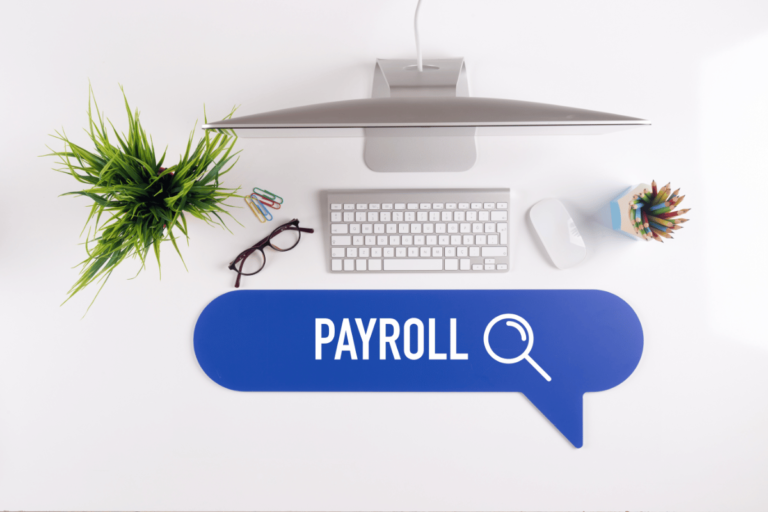Integrating HR Systems for a Unified Employee Experience
In today's fast-paced business environment, organizations are constantly seeking ways to improve their operational efficiency and employee experience. One area that holds immense potential for transformation is the integration of HR systems.
By seamlessly connecting various HR functions, organizations can streamline processes, centralize data management, and enhance the overall employee experience. But what exactly does it mean to integrate HR systems? And what benefits does it offer?
In this discussion, we will explore the importance of HR system integration, the advantages it brings, and how it can positively impact employee satisfaction and engagement.
So, let's dive into the world of integrated HR systems and uncover the possibilities that lie ahead.
Key Takeaways
- HR system integration enhances organizational efficiency and improves employee experience.
- Streamlining HR functions through centralization and automation saves time and reduces paperwork.
- Centralizing HR processes in a unified system improves data management and reduces the risk of errors.
- Integrating HR systems enhances communication, collaboration, and decision-making within HR teams and employees.
Importance of HR System Integration
HR system integration plays a vital role in enhancing overall organizational efficiency and employee experience. By integrating various HR systems, organizations can improve communication and optimize data management, leading to streamlined processes and improved decision-making.
One of the key benefits of HR system integration is the improvement in communication across the organization. When HR systems are integrated, information can flow seamlessly between different departments and teams. This eliminates the need for manual data entry and reduces the chances of errors or miscommunication. Employees can easily access and share relevant information, fostering collaboration and improving overall efficiency.
Furthermore, integrating HR systems allows for the optimization of data management. When HR systems are integrated, data from various sources such as recruitment, payroll, and performance management can be consolidated into a single platform. This centralization of data enables organizations to gain insights and make informed decisions based on accurate and up-to-date information. It also simplifies reporting processes and ensures compliance with data privacy regulations.
Streamlining HR Functions for Efficiency
Efficient streamlining of HR functions is essential for maximizing organizational productivity and optimizing employee performance. By improving communication and optimizing workflows within HR processes, companies can ensure better efficiency and effectiveness in their operations.
Here are three key ways to streamline HR functions for efficiency:
- Centralizing HR Information: Implementing a unified HR system allows for the consolidation of employee data, making it easily accessible to HR professionals. This eliminates the need for manual data entry and reduces the risk of errors. By having a centralized information hub, HR teams can quickly retrieve the necessary data, saving time and effort.
- Automating HR Processes: Automation can significantly speed up HR processes, such as recruitment, onboarding, and performance management. By utilizing HR software and tools, companies can automate routine tasks, eliminate paperwork, and reduce administrative burdens. This not only increases efficiency but also improves accuracy and compliance with regulations.
- Integrating HR Systems: Integrating different HR systems, such as payroll, benefits, and timekeeping, into a single platform can streamline HR functions and eliminate duplicate data entry. This integration ensures smooth information flow between systems, reducing manual errors and improving data accuracy. It also enables HR professionals to access real-time data, allowing for better decision-making and faster response times.
Centralizing HR Processes for Better Management
Centralizing HR processes is crucial for effective management and seamless coordination of employee-related activities within an organization. By centralizing HR data, organizations can ensure that all employee information is stored in a single, easily accessible location. This eliminates the need for multiple HR systems and reduces the risk of data duplication or inconsistencies. Centralizing HR data also enables HR professionals to quickly and accurately retrieve information when needed, improving efficiency and productivity.
In addition to centralizing HR data, automating HR processes is another essential aspect of better management. Automation eliminates manual and repetitive tasks, freeing up HR professionals to focus on more strategic initiatives. It also reduces the chances of errors and ensures consistency in HR processes. For example, automating the onboarding process can streamline the completion of paperwork, training, and orientation for new hires, resulting in a positive employee experience from day one.
Enhancing Employee Experience Through Integration
To further optimize employee engagement and satisfaction, organizations can leverage integration strategies that seamlessly connect various HR systems and technologies. This integration not only streamlines HR processes but also enhances the overall employee experience. Here are three ways integration can enhance employee experience:
- Employee Empowerment: Integration allows employees to access and manage their own HR information, such as leave requests, performance evaluations, and training programs. This self-service approach empowers employees by giving them control over their own HR processes and reduces the administrative burden on HR teams.
- Seamless Communication: Integration enables real-time and seamless communication between HR systems, such as payroll, benefits, and attendance. This ensures that employees have accurate and up-to-date information at their fingertips, enabling them to make informed decisions and stay connected with important HR updates.
- Personalized Employee Experience: Integration allows HR systems to share data, giving organizations a holistic view of each employee. This enables HR teams to personalize the employee experience by tailoring benefits, training, and career development programs to individual needs and preferences.
Benefits of a Unified HR System
A unified HR system offers numerous benefits to organizations.
Firstly, it streamlines processes by integrating various HR functions into a single platform, eliminating the need for multiple systems and reducing administrative burdens. This leads to increased efficiency and productivity.
Secondly, a unified HR system enhances employee engagement by providing a seamless and personalized experience, allowing employees to easily access and manage their benefits, performance evaluations, and training programs. This fosters a positive employee experience and improves overall satisfaction and retention rates.
Streamlined Processes
Implementing a unified HR system enables organizations to optimize their processes, leading to increased efficiency and improved employee experience.
Streamlining HR processes can have several benefits:
- Centralized Data: A unified HR system allows for all employee data to be stored in one place, eliminating the need for multiple systems and reducing data duplication. This streamlines processes such as onboarding, offboarding, and employee record management.
- Automated Workflows: By integrating various HR functions into one system, organizations can automate repetitive tasks, such as payroll processing, time-off requests, and performance reviews. This not only saves time but also reduces the risk of errors.
- Enhanced Collaboration: A unified HR system improves communication and collaboration between HR teams and employees. It enables seamless sharing of information, facilitates timely feedback, and promotes a collaborative work environment.
Enhanced Employee Engagement
Enhanced employee engagement is a key advantage of implementing a unified HR system within an organization. By centralizing HR processes and data, a unified system enables better communication and employee recognition, leading to increased engagement levels.
Improved communication is a significant benefit of a unified HR system. With a single platform for employee data and information, communication channels can be streamlined, making it easier for employees to collaborate and share information. This enhanced communication fosters a sense of belonging and connection among employees, leading to increased engagement.
Furthermore, a unified HR system allows for better employee recognition. With access to a centralized database, managers can easily track and acknowledge employee achievements and contributions. This recognition not only boosts morale but also motivates employees to perform at their best, leading to higher levels of engagement.
In summary, a unified HR system improves employee engagement through enhanced communication and employee recognition. This leads to a more positive and productive work environment, benefiting both employees and the organization as a whole.
| Benefits of a Unified HR System | |
|---|---|
| Enhanced communication | Improved collaboration and information sharing |
| Employee recognition | Acknowledgement of achievements and contributions |
| Increased engagement | Higher levels of motivation and productivity |
Strategies for Successful Implementation
To ensure a smooth and successful integration of HR systems, organizations must develop well-defined strategies. Implementing HR systems can be a complex process, requiring careful planning and execution.
Here are three key strategies for a successful implementation:
- Define clear objectives: Before starting the integration process, organizations must clearly define their goals and objectives. This includes identifying the specific HR functions they want to improve, such as recruitment, onboarding, or performance management. By setting clear objectives, organizations can align their efforts and ensure that the integration process is targeted and effective.
- Engage stakeholders: Involving key stakeholders throughout the implementation process is crucial for success. This includes HR teams, IT departments, and end-users. By engaging stakeholders from the beginning, organizations can gather valuable insights, address concerns, and ensure that the integrated HR systems meet the needs of all parties involved.
- Plan for change management: Implementing new HR systems often requires a change in processes and workflows. Organizations must develop a comprehensive change management plan to minimize resistance and maximize adoption. This includes providing training and support to employees, communicating the benefits of the new system, and addressing any potential challenges that may arise during the implementation process.
Improving Employee Satisfaction and Engagement
Improving employee satisfaction and engagement is crucial for organizations seeking to enhance productivity and morale.
By implementing effective HR systems, companies can empower employees to grow and develop, leading to increased job satisfaction and motivation.
This in turn fosters a positive work environment and ultimately improves overall employee engagement levels.
Enhanced Productivity and Morale
Employee satisfaction and engagement are crucial factors in promoting a productive and motivated workforce. By enhancing productivity and morale, organizations can create an environment that fosters employee satisfaction and engagement.
Here are three ways organizations can achieve this:
- Improved collaboration: Integrating HR systems allows employees to easily connect and collaborate with their colleagues, breaking down silos and promoting knowledge sharing. This enhances teamwork and enables employees to work together more efficiently towards common goals.
- Increased efficiency: Streamlining HR processes through integrated systems eliminates manual tasks and reduces administrative burden. This frees up employees' time, allowing them to focus on more meaningful work and increasing overall efficiency.
- Enhanced communication: Integrated HR systems provide a centralized platform for communication, ensuring that important information reaches employees in a timely manner. This improves transparency and clarity, boosting morale and reducing misunderstandings.
Empowering Employee Growth
By empowering employees to take ownership of their own growth and development, organizations can create a culture of continuous improvement and enhance overall employee satisfaction and engagement. Employee development plays a crucial role in fostering a motivated and skilled workforce. Offering skills training programs not only equips employees with the necessary knowledge and competencies but also demonstrates the organization's commitment to their professional growth.
These programs can include workshops, online courses, mentorship programs, and job rotations. Additionally, organizations can encourage employees to set personalized development goals and provide resources to support their progress. Empowering employees in their growth enables them to acquire new skills, stay relevant in a rapidly changing business landscape, and contribute effectively to the organization's success.
It also improves employee satisfaction and engagement by showing that the organization values their individual growth and development.
Reducing Errors With Integrated HR Systems
To enhance accuracy and efficiency, the implementation of integrated HR systems significantly minimizes errors in administrative processes. By streamlining data management and automating routine tasks, these systems provide a cohesive platform for HR operations, reducing the likelihood of mistakes.
Here are three key ways integrated HR systems help in reducing errors:
- Centralized Data: Integrated HR systems consolidate employee data from various sources into a single, unified database. This eliminates the need for manual data entry and reduces the risk of errors caused by duplicate or conflicting information.
- Automated Workflows: Integrated HR systems automate repetitive tasks such as employee onboarding, leave management, and payroll processing. By reducing manual intervention, these systems minimize the chances of errors that can occur during manual data input or calculation.
- Real-time Updates and Notifications: Integrated HR systems enable real-time updates and notifications, ensuring that HR personnel have access to the most current and accurate information. This helps in preventing errors caused by outdated or incomplete data.
Enhancing Payroll Administration Through Integration
The integration of HR systems enhances payroll administration by streamlining processes and ensuring accuracy and efficiency. Payroll automation, a key component of integrated HR systems, eliminates manual data entry and calculations, reducing the risk of errors and saving time for HR personnel. By integrating payroll with other HR systems such as time and attendance, benefits administration, and employee self-service portals, organizations can create a seamless flow of data, enabling real-time updates and access to information.
However, integrating payroll systems can pose certain challenges. One common challenge is the compatibility of different systems and software. Organizations may have to invest in additional technology or customize existing systems to ensure smooth integration. Another challenge is data security, as integrating systems requires sharing sensitive employee information across platforms. Organizations must implement robust security measures and compliance protocols to protect employee data.
To better understand the benefits and challenges of integrating payroll systems, consider the following table:
| Benefits of Payroll Integration | Challenges of Payroll Integration |
|---|---|
| Streamlined processes and increased efficiency | Compatibility of different systems and software |
| Real-time data updates and access | Data security and privacy concerns |
| Reduced manual data entry and calculation errors | Additional investment in technology or customization |
| Enhanced accuracy in payroll processing | Compliance with regulations and legal requirements |
Leveraging Integrated Systems for Performance Management
Integrating HR systems allows organizations to leverage integrated systems for enhanced performance management. By consolidating data from various HR systems into a single platform, businesses can streamline their performance tracking processes and gain valuable insights to optimize employee productivity and engagement.
Here are three ways organizations can leverage integrated systems for performance management:
- Centralized Data Repository: Integrated HR systems provide a centralized repository for employee performance data, including goals, feedback, and performance evaluations. This eliminates the need for manual data entry and ensures accuracy and consistency in performance tracking.
- Real-time Performance Monitoring: Integrated systems enable real-time performance monitoring, allowing managers to track employee progress and identify areas for improvement promptly. By leveraging data from various HR systems, organizations can gain a holistic view of employee performance and make data-driven decisions.
- Automated Performance Evaluation: Integrated systems can automate performance evaluation processes, simplifying the performance review cycle. With integrated systems, managers can easily access employee performance data, generate performance reports, and conduct evaluations efficiently.
Conclusion
In conclusion, integrating HR systems is crucial for creating a unified employee experience. By streamlining HR functions and centralizing processes, organizations can improve efficiency and management.
Integration also enhances employee satisfaction and engagement, reduces errors, and improves payroll administration. Leveraging integrated systems can further enable effective performance management.
Ultimately, a unified HR system provides numerous benefits and contributes to a more efficient and enjoyable workplace, ensuring that employees are on the same page and singing from the same hymn sheet.







